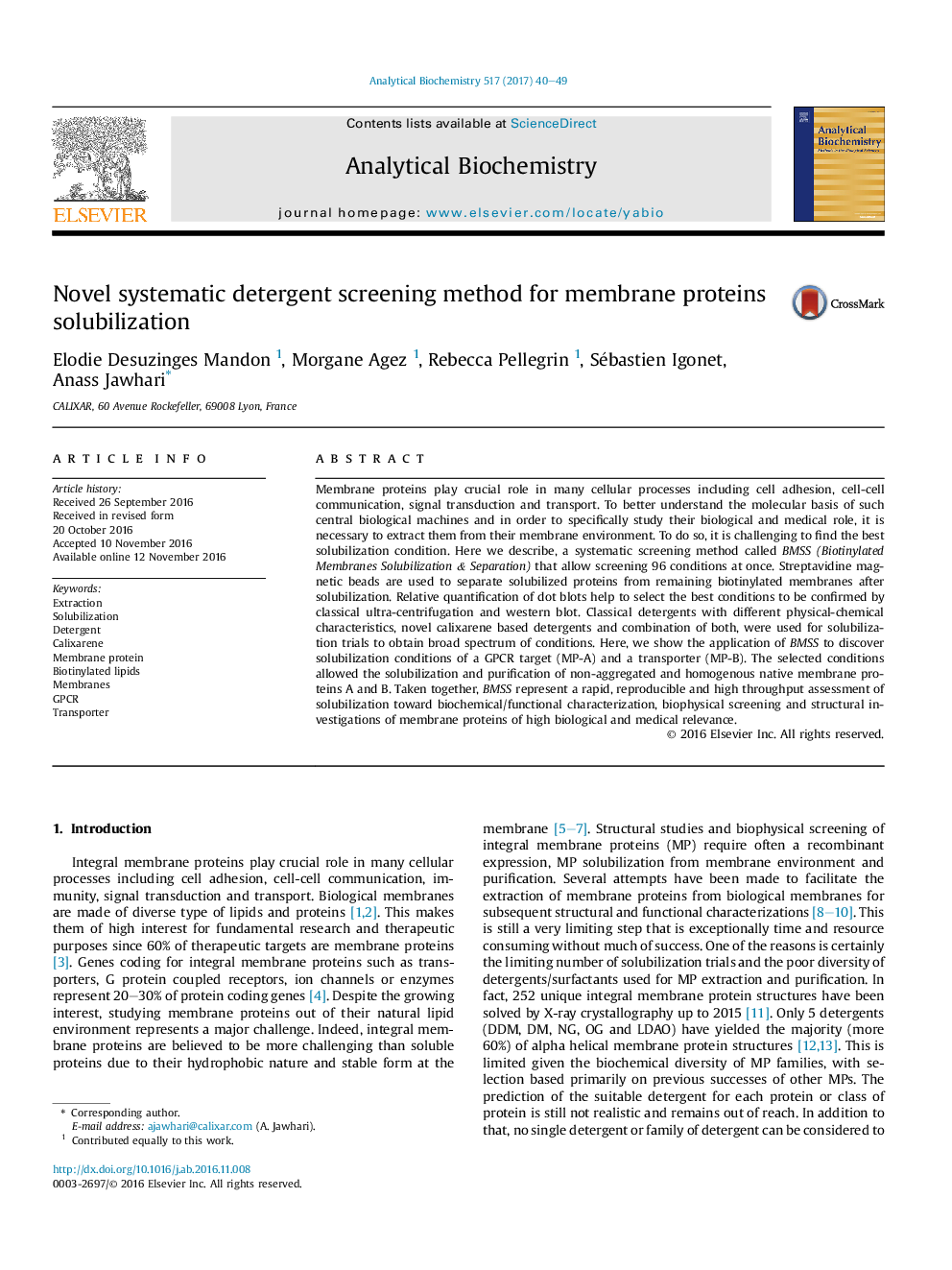| Article ID | Journal | Published Year | Pages | File Type |
|---|---|---|---|---|
| 5131699 | Analytical Biochemistry | 2017 | 10 Pages |
Membrane proteins play crucial role in many cellular processes including cell adhesion, cell-cell communication, signal transduction and transport. To better understand the molecular basis of such central biological machines and in order to specifically study their biological and medical role, it is necessary to extract them from their membrane environment. To do so, it is challenging to find the best solubilization condition. Here we describe, a systematic screening method called BMSS (Biotinylated Membranes Solubilization & Separation) that allow screening 96 conditions at once. Streptavidine magnetic beads are used to separate solubilized proteins from remaining biotinylated membranes after solubilization. Relative quantification of dot blots help to select the best conditions to be confirmed by classical ultra-centrifugation and western blot. Classical detergents with different physical-chemical characteristics, novel calixarene based detergents and combination of both, were used for solubilization trials to obtain broad spectrum of conditions. Here, we show the application of BMSS to discover solubilization conditions of a GPCR target (MP-A) and a transporter (MP-B). The selected conditions allowed the solubilization and purification of non-aggregated and homogenous native membrane proteins A and B. Taken together, BMSS represent a rapid, reproducible and high throughput assessment of solubilization toward biochemical/functional characterization, biophysical screening and structural investigations of membrane proteins of high biological and medical relevance.
